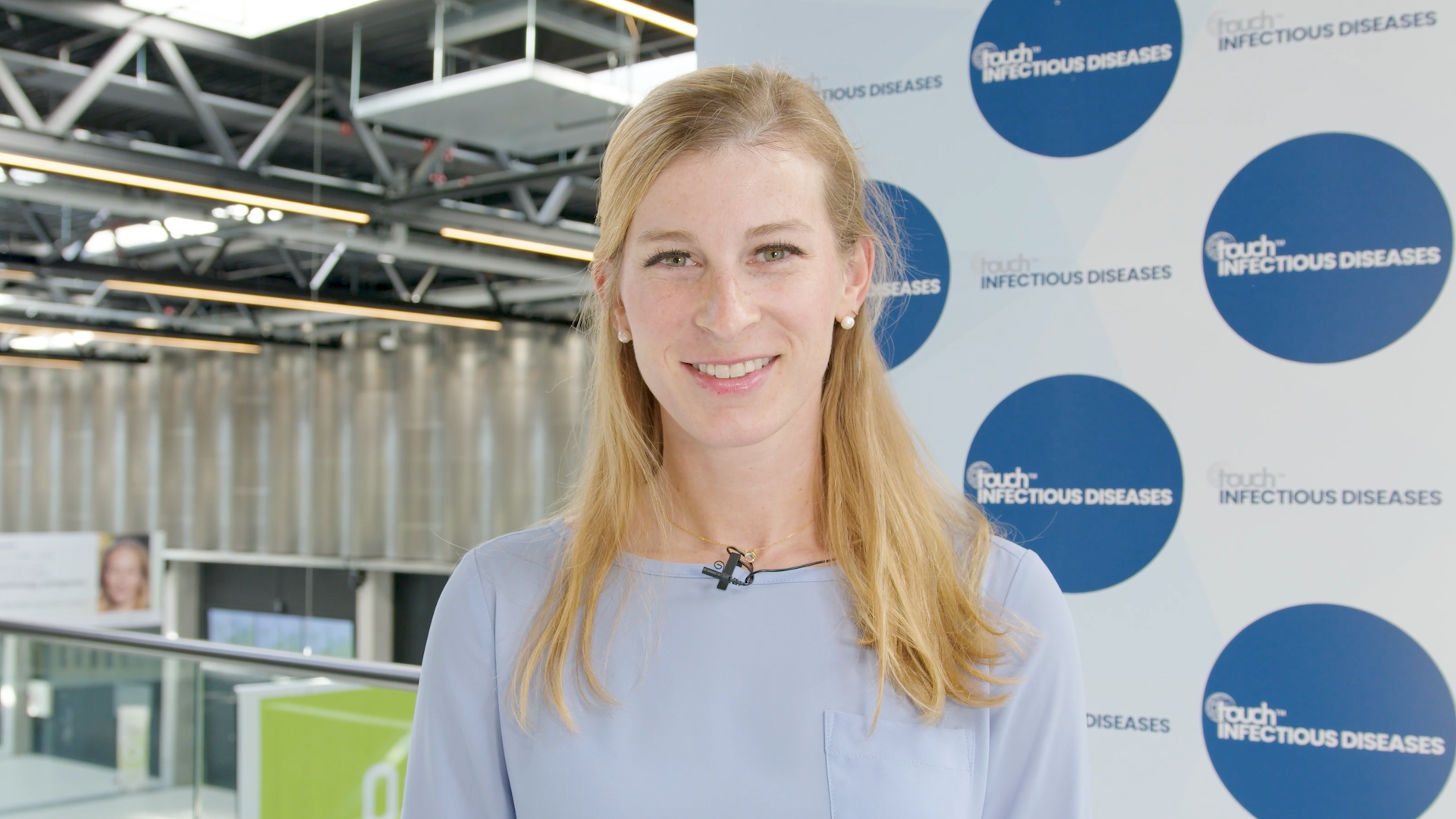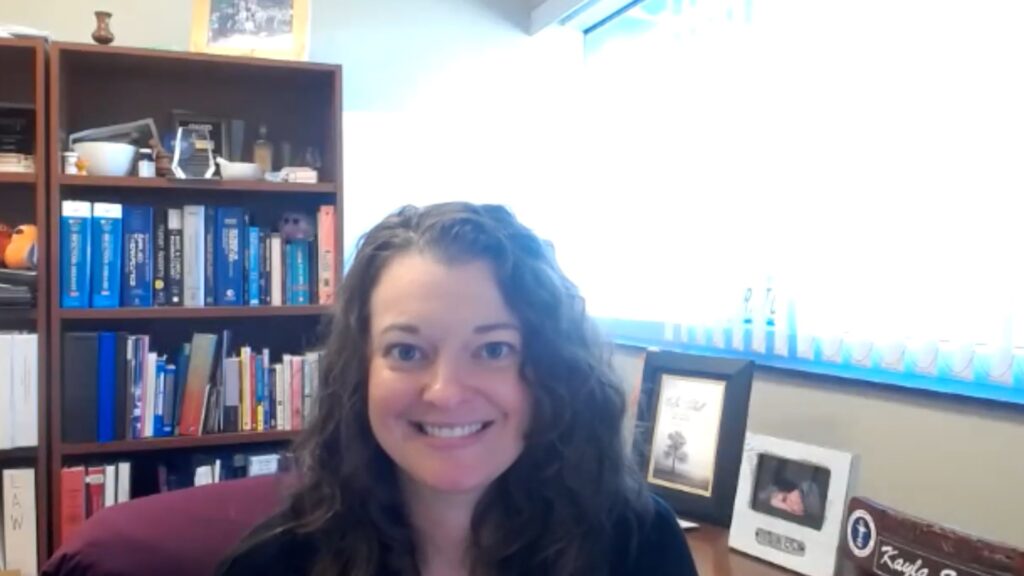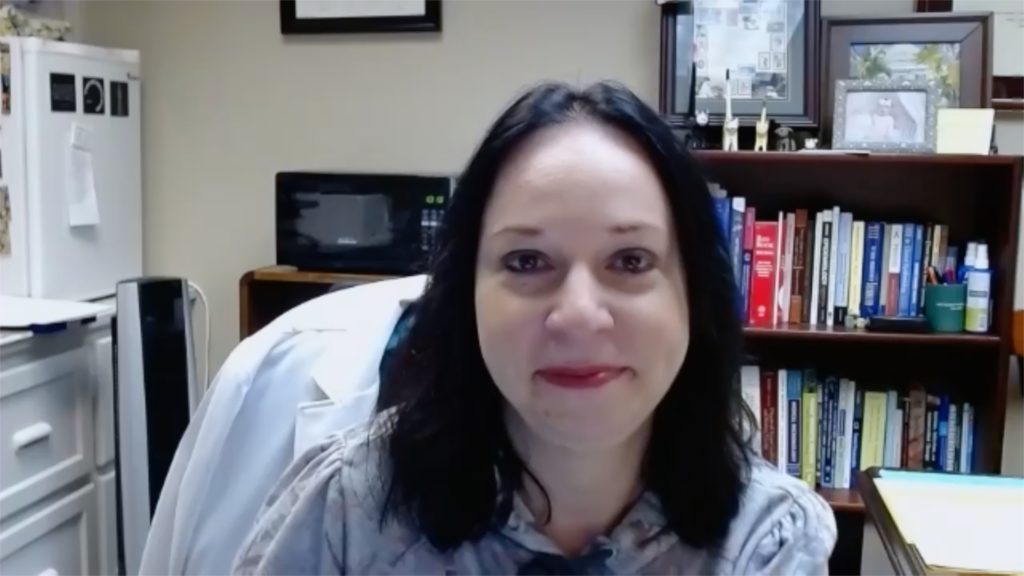Prosthetic joint infections (PJI) are difficult to treat and require a multidisciplinary approach including surgical and therapeutic approaches to overcome infection. We were delighted to speak with Dr. Robin Patel (Mayo Clinic, Rochester, MN, USA) to learn more around the incidence, pathogenesis, and prognosis of PJI, the challenges in diagnosis and treatment of PJI and the rationale for the use of bacteriophage therapy for the treatment of PJI.
The symposia ‘PJI: pathogenesis, diagnosis, and novel treatment approaches.’ (Symposia number: SY041) was presented at ECCMID 2023, 15-18 April, 2023, Copenhagen, Denmark.
Questions
- Could you give us a brief overview of the incidence, pathogenesis, and prognosis of prosthetic joint infections (PJI)? (0:14)
- What challenges are associated with the clinical diagnosis of PJI? (2:05)
- Why is a multidisciplinary approach to treatment crucial in the management of PJI? (5:02)
- What is the current standard of care for PJI and what factors influence treatment approach? (7:08)
- What is your opinion on the use of bacteriophage therapy for the treatment of PJIs? Do you think it has the potential to become an important tool in the management of these infections? (10:31)
Disclosures: Dr. Patel reports grants from ContraFect, TenNor Therapeutics Limited, and BIOFIRE. Dr. Patel is a consultant to PhAST, Torus Biosystems, Day Zero Diagnostics, Mammoth Biosciences, and HealthTrackRx; monies are paid to Mayo Clinic. Mayo Clinic and Dr. Patel have a relationship with Pathogenomix. Dr. Patel has research supported by Adaptive Phage Therapeutics. Mayo Clinic has a royalty-bearing know-how agreement and equity in Adaptive Phage Therapeutics. Dr. Patel is also a consultant to Netflix, Abbott Laboratories, Oxford Nanopore Technologies,and CARB-X. In addition, Dr. Patel has a patent on Bordetella pertussis/parapertussis PCR issued, a patent on a device/method for sonication with royalties paid by Samsung to Mayo Clinic, and a patent on an anti-biofilm substance issued. Dr. Patel receives honoraria from the NBME, Up-to-Date and the Infectious Diseases Board Review Course.
Support: Interview and filming supported by Touch Medical Media Ltd. Interview conducted by Victoria Jones and Katey Gabrysch.
Filmed in coverage of the 33rd European Congress of Clinical Microbiology & Infectious Diseases
Click here for more content on bacterial infections & for further ECCMID 2023 highlights visit here
Transcript
Could you give us a brief overview of the incidence, pathogenesis, and prognosis of prosthetic joint infections (PJI)? (0:14)
PJI or prosthetic joint infection is an infection that involves replacements of joints. So like knee replacements, hip replacements and so forth. It doesn’t occur in everybody, fortunately, who has a joint replacement, joint replacements are highly successful surgery that lots of people around the world are getting. But if you follow people who get joint replacements and we have the most data for hips and knees over time, up to 2% of individuals in some studies, the data vary from study to study may develop an infection associated with that joint replacement. Again, we have most information about hips and knees. We also replace shoulders, we replace elbows, we replace ankles and even the small bones in the hands and wrists and so forth and we have much less information about those joints. The way that they become infected, it’s not completely clear. But what we believe happens is that organisms will contact those implants at the time they are placed, and once they do so, they can adhere to the surfaces of those implants and form what are called biofilms and those biofilms are relatively refractory to our immune system, as well as to a lot of antibiotics that we use in clinical practice. Alternatively, those organisms can arrive to those sites through the blood after the implant is placed, or sometimes by direct spread. If there’s a way for that to happen, but regardless of how they get there, once they’re there, if they form biofilms and they stay there, they will likely come back over time and manifest clinical symptoms.
What challenges are associated with the clinical diagnosis of PJI? (2:05)
It can be clear that a patient has an infection in some cases, but it can be unclear in other cases. These are infections that involve replace joints, so people go into the surgery having a problem with their joint in the first place and once they have the implant in place, hopefully it works perfectly fine, but sometimes it doesn’t and there can be pain, some swelling and so forth and that can be either from infection or it can be from other causes of what we call arthroplasty failure. And those can sometimes be difficult to differentiate just based on how the patient is presenting. Some of the classic findings of infection, such as fever, are typically absent in prosthetic joint infection. So clinically it can be a little hard. There are cases where it’s clear, for example, there can be the formation of what’s called a sinus tract, and that is a communication from the skin all the way down to the implant. When that happens, that’s clearly an infection. But most patients who have infections don’t have a sinus trap. So just looking at how the patient presents can be, you know, not clear whether there’s an infection present or not. Typically we have to run diagnostic tests to figure out whether the joint is infected or not. Those diagnostic tests can be run on blood, but that is not sort of a perfect type of diagnostic test to figure out whether there’s an infection. Typically, we have to go to the site, the joint itself, to get some more data and a common test that’s done is to aspirate synovial fluid, so fluid around the implanted joint and look at that for the cell count and the neutrophil percentage, which give us an idea of whether there is acute inflammation present and then of course, we run cultures as well because it’s important to figure out whether the joint is infected or not infected. But we also need to know which organism might be present. Even with those synovial fluid tests, though they’re recommended, sometimes we don’t get an answer. We have some more advanced diagnostic tests, including those that look at the host response and also those that look for microorganisms, for example, using PCR or deep sequencing and those can be done on synovial fluid. But still we have cases where the synovial fluid diagnostics really don’t clarify the situation or it’s not possible to get synovial fluid and there we have to get specimens typically at the time the patient comes to surgery because if there is a possible infection that might be there and definitely if there is an infection there, the patient needs to go to surgery and we’ll collect specimens then at the time of surgery, both to answer the question as to whether it looks like there’s infection present, as well as to try to find that organism or the organisms that are causing the infection if infection is present.
Why is a multidisciplinary approach to treatment crucial in the management of PJI? (5:02)
When we talk about a multidisciplinary approach, we talk about having health care providers from various different areas working together and that’s an approach that’s very commonly known to patients for cancer chemotherapy, for example, prosthetic joint infection. Peri prosthetic joint infection is a complicated type of infection. We’ve already talked about diagnosis and that can be tricky figuring out what’s causing the infection. The management is also complicated. I talked about having biofilms on the surface of those implants and we have to get rid of them to treat infection. But beyond that, the patient has had a joint replacement and the reason they had the joint replacement is so they can have a more functional joint. It’s not just about treating infection and eradicating the organism, it’s about really giving that patient back a functional joint that hopefully is not infected and works at the same time and so management definitely involves surgery and there are many surgical strategies and you really need to have a surgeon who has expertise in the management of infected joint replacements. But then there are also antibiotics that need to be used, and those antibiotics need to be properly targeted to the organism or organisms that are causing infection and sort of coordinated with a surgical approach. Typically, unfortunately, the antibiotics have to be given for long periods of time. So there is management that has to go on in terms of making sure the patient gets the antibiotic, gets the right dosing of the antibiotic, tolerates the antibiotic and doesn’t run into side effects from the antibiotic where we might need to, for example, adjust the regimen and then finally, unfortunately, some of the treatments are not successful and so if the treatment’s going to fail, that needs to be recognized early on, as early on as possible for the poor patient. Then a change needs to be made. So really, you’re talking about very complex care and, you know, having experts and experts working together from different areas is the ideal management strategy, in my opinion.
What is the current standard of care for PJI and what factors influence treatment approach? (7:08)
To manage PJI, as I mentioned, you need both surgery and antibiotics, and there are different kinds of surgery that can be done. So in the most aggressive or one of the most aggressive approaches, the implant is actually removed. That is ideal because it removes the biofilm. It’s ideal from a treatment standpoint. It’s maybe not ideal for the patient because then they need to have a new implant and that new implant can either be put right back in. That’s called a one stage exchange. So you take one out, you put a new one in. Or alternatively, the implant can come out and the patient can be left without an implant in place for a period of weeks while antibiotics are given sort of to clear out the infection. Then later on, a new implant can be put in. That is maybe perfectly ideal from a microbiology standpoint, but not from a patient perspective, as you might expect. When that’s done, there’s typically what’s called a spacer that’s put in place, which is kind of like an implant that’s made of a material, oftentimes releasing antibiotics locally into the space. That is a temporary management strategy until a more permanent replacement can be put in place. Then there’s another strategy, which is where the implant is left in place. The surgeon opens the joint, cleans everything out, does what’s called a debris mall, or cleans out the infected tissue, irrigates that area and then closes. So leaving that implant in place, that does leave some biofilms there because it’s impossible to remove them all surgically. But it’s nice for the patient because they retain the implant that they started with. Then finally, we do see some infections where it’s just impossible to manage the infection. Oftentimes, patients have had multiple surgeries, and the infection is just not going away or they keep getting new infections and unfortunately, in those cases, which are rare, patients have to sometimes have what’s called an arthrodesis, for example, if it’s a knee where basically their bones are just put together and there’s no implant or in the worst case scenario, have an actual amputation of a limb. So it’s a complicated management strategy. The one strategy that doesn’t seem to work very well is to just treat with antibiotics. There are obviously patients who cannot undergo surgery and we can attempt to sort of suppress things and keep the infection at bay. But that strategy is not ideal for this and what we haven’t completely sorted out, it’s sort of to your question is, who qualifies for which management strategy? Obviously, we like to do the best management strategy for the patient and peri-prosthetic joint infection is fundamentally a rare disease. So we don’t have a lot of information on what’s the perfect management strategy for each patient that’s evolving over time, which is one of the other reasons why we have multidisciplinary teams as sort of our ideal approach and also clinical trials to learn what the best approach is. But we do look at the organism type, we look at the patient and we look at how well seeded that implant is. We look at how long this infection has been going on and all of those factors and others are used to determine what the ideal surgical strategy is.
What is your opinion on the use of bacteriophage therapy for the treatment of PJIs? Do you think it has the potential to become an important tool in the management of these infections? (10:31)
That’s a good question. So we typically use antibiotics to treat bacterial infections, and most of these infections are bacterial. There can be fungal infections in rare scenarios. We have antibiotics that work against the bacteria that cause these infections. But we know they don’t work well against biofilms in many cases, although we have examples of antibiotics that do. We also have emerging resistance as a challenge. So you’ve heard about antimicrobial resistance. Well, that is affecting peri-prostheticc joint infections. So sometimes the organisms involved have acquired antibiotic resistance and we just don’t have a choice there in terms of antibiotics and then we also just have our experience from treatment of these infections and we have patients who have what appear to be susceptible infections but just are not responding to the antibiotics that we’ve been giving them and so we’re looking for alternatives to treat these infections and phage, which are viruses that infect bacteria, are attractive in that regard. They are highly abundant, so we can find phage that work potentially against individual patients, bacterial isolates and that’s exciting. As far as we understand it, they’re generally well tolerated. So there’s not a huge safety concern, although we have to be aware of that as well and so as we search for alternatives to treat these challenging to treat infections, phage are being considered and they are being administered in some cases. What we don’t know is the conditions under which they work. We don’t know exactly how to administer them in these infections. There’s the possibility oftentimes of giving them locally right into the joint in a number of different ways. But we can also give them systemically, like through the vein, for example, we don’t know how many doses people might need. There are studies that are ongoing looking at phage therapy for a number of infectious diseases, including peri-prosthetic joint infection and I’m hopeful that will be a therapeutic approach that could be used, probably adjunctively to conventional antibiotics and obviously adjunctively to surgery, although, you know, conceptually we could find a treatment in the future that takes away the need for surgery. But all of these are research questions in my mind. So, phage therapy is exciting. But as someone who does a lot of research, it’s really a topic that we need to study in our patients. So we can learn, you know, does this therapy actually work for patients and how should we be administering it?
Subtitles and transcript are autogenerated.











